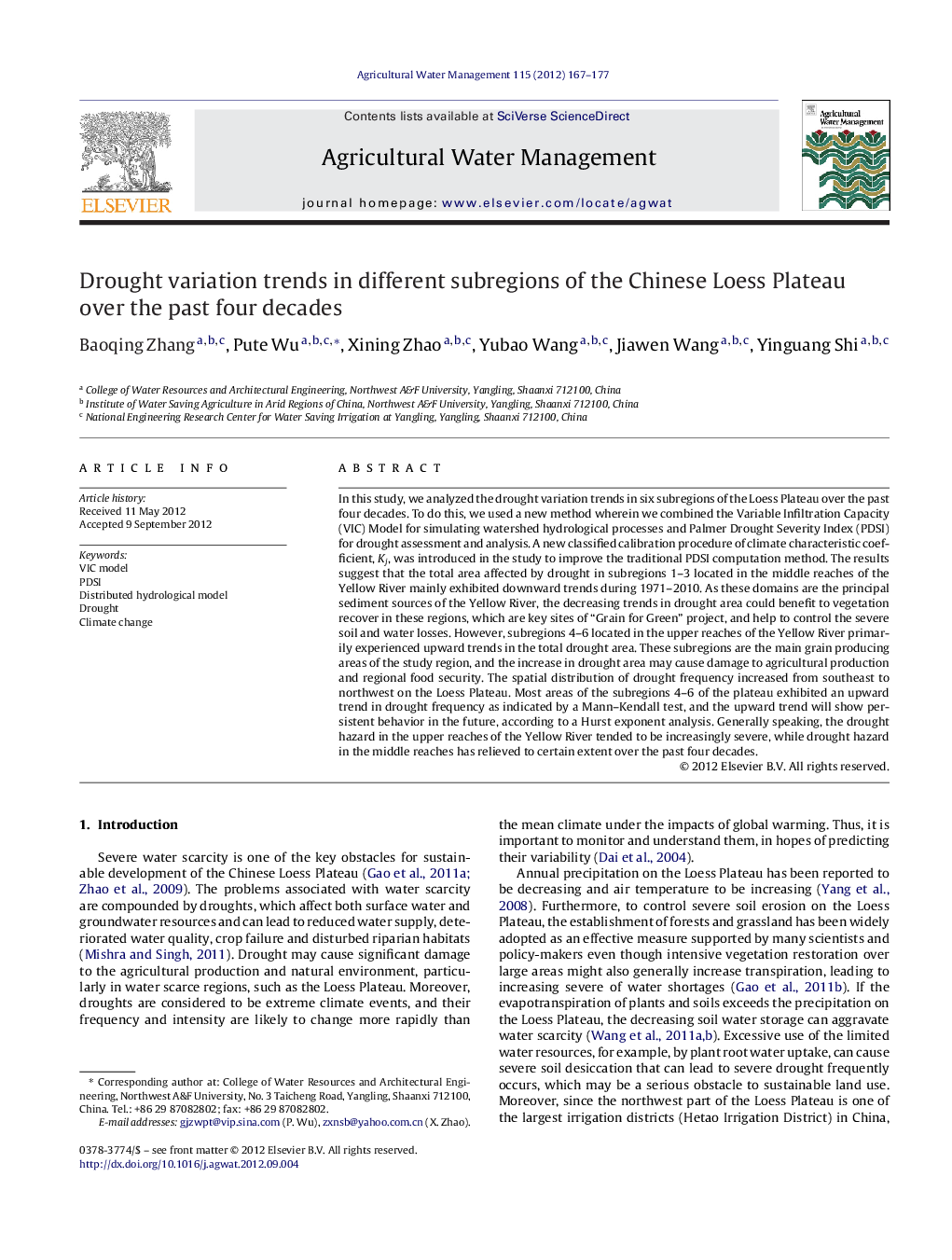| Article ID | Journal | Published Year | Pages | File Type |
|---|---|---|---|---|
| 4479061 | Agricultural Water Management | 2012 | 11 Pages |
In this study, we analyzed the drought variation trends in six subregions of the Loess Plateau over the past four decades. To do this, we used a new method wherein we combined the Variable Infiltration Capacity (VIC) Model for simulating watershed hydrological processes and Palmer Drought Severity Index (PDSI) for drought assessment and analysis. A new classified calibration procedure of climate characteristic coefficient, Kj, was introduced in the study to improve the traditional PDSI computation method. The results suggest that the total area affected by drought in subregions 1–3 located in the middle reaches of the Yellow River mainly exhibited downward trends during 1971–2010. As these domains are the principal sediment sources of the Yellow River, the decreasing trends in drought area could benefit to vegetation recover in these regions, which are key sites of “Grain for Green” project, and help to control the severe soil and water losses. However, subregions 4–6 located in the upper reaches of the Yellow River primarily experienced upward trends in the total drought area. These subregions are the main grain producing areas of the study region, and the increase in drought area may cause damage to agricultural production and regional food security. The spatial distribution of drought frequency increased from southeast to northwest on the Loess Plateau. Most areas of the subregions 4–6 of the plateau exhibited an upward trend in drought frequency as indicated by a Mann–Kendall test, and the upward trend will show persistent behavior in the future, according to a Hurst exponent analysis. Generally speaking, the drought hazard in the upper reaches of the Yellow River tended to be increasingly severe, while drought hazard in the middle reaches has relieved to certain extent over the past four decades.
► We combined the VIC model and PDSI to do drought assessment. ► A classified calibration method of climate characteristic coefficient was introduced. ► The total drought area in subregions1–3 decreased during 1971–2010. ► Subregions 4–6 of the plateau exhibited upward trends in drought frequency. ► The drought frequency increased from southeast to northwest on the Loess Plateau.
